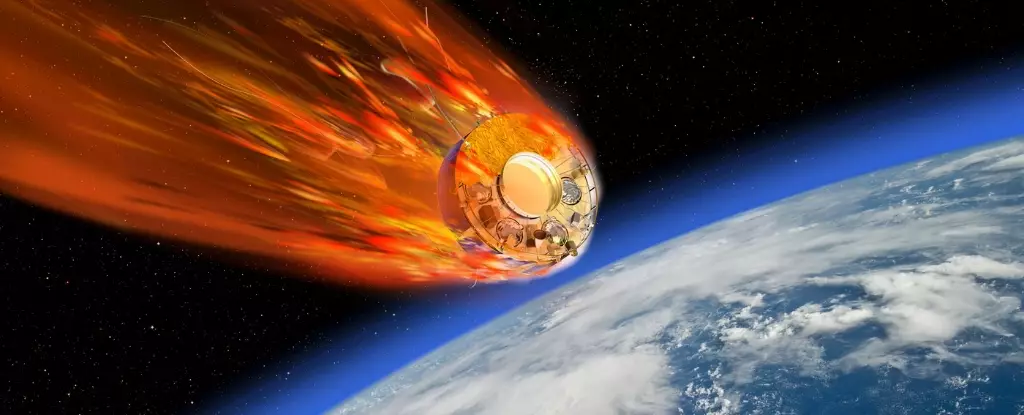The Cold War period of the 1960s and 70s marked a time when the United States and the Soviet Union were not merely rivals on Earth but also in the vast expanse of space. The USSR, in its fervor to demonstrate the supremacy of socialist science, launched an ambitious Venus exploration program characterized by the Venera missions. While aspirations often soared higher than the technology of the time could sustain, the endeavor was undeniably one of the most significant chapters in the history of space exploration. Scientists have frequently referred to Venus as Earth’s “twin sister,” partially due to its similar size and proximity to our planet; however, its conditions are anything but hospitable.
Over the years, the Soviets launched no fewer than 29 missions targeting Venus, a testament to their ambition. The outcomes were a mixed bag of failure and success; while some missions made it to orbit or landed on the inhospitable surface of Venus, many succumbed to the harsh realities of space. The Kosmos 482 mission stands out—not just for its unanticipated journey but as a symbol of the unforeseen consequences of human ambitions in the cosmos.
The Plight of Kosmos 482
Out of all the Venera missions, Kosmos 482 is particularly intriguing. Launched in tandem with Venera 8, Kosmos 482 was doomed to fail due to a technical malfunction that left it trapped in Earth orbit, while its twin successfully penetrated the Venusian atmosphere on July 22, 1972. For over five decades, Kosmos 482 has remained as a mere vestige of what could have been; however, it transforms into a subject of fascination as it prepares for an uncontrolled reentry back to Earth. Dubbed a piece of space junk, its history weaves through science, politics, and even popular culture.
Historical records detail how this spacecraft was meticulously designed to withstand the extreme conditions of Venus, with a titanium body engineered to endure an environment with pressures up to 90 times greater than Earth’s and temperatures exceeding 470 degrees Celsius. However, as we approach May 10, the predicted reentry date, experts express uncertainty about the fate of this relic. Without the built-in refrigeration systems and protective mechanisms, the legacy of Kosmos 482 hangs precariously in the balance.
The Enigmatic Interface of Science and Fiction
The legacy of Kosmos 482 also intersects intriguingly with the public imagination, spurred by a series of cultural artifacts depicting ominous narratives surrounding Venus. From Cold War anxieties reflected in films like “The Silent Star” to the horror-infused sci-fi of “Night of the Living Dead,” Venus has often been portrayed as a foreboding entity. These cinematic interpretations spoke to the deep-seated fears of nuclear war and extraterrestrial implications arising from scientific endeavors.
Such fears were palpable during the Cold War, manifesting through a myriad of media portraying space probes as harbingers of doom. Ironically, while Kosmos 482’s predecessors aimed to unveil the secrets of Venus, its cinematic depiction as a threatening force showcases society’s apprehension about the unknown. Present-day reflections may steer the conversation towards space junk, as public anxiety about the cosmos navigates from Cold War fears to apprehensions about environmental impacts.
Space Junk and Environmental Concerns
In the 21st century, as humanity witnesses an unprecedented surge in commercial and governmental space launches, the accumulation of space debris has become a pressing concern. Unlike Kosmos 482, which was a celebrated piece of engineering, much of today’s orbital debris poses genuine risks to future missions and the integrity of low Earth orbit. The reentry of satellites like Starlink has been observed with increasing frequency, leaving behind a trail of chemicals and pollutants—a stark contrast to the earnest ambitions found in the earlier space race.
While we romanticize the achievements of the past, including the Venera missions, it is crucial to acknowledge that our advancements have come at a significant cost. The stakes are higher than imagined, as the ecological footprint of space operations introduces a new layer of complexity to our relationship with the cosmos. The fate of Kosmos 482 serves as a reminder of what can go wrong but also sparks debate on our moral obligations concerning space exploration and stewardship of the environment.
The specter of uncontrolled reentry invites more than just intrigue; it compels us to evaluate our history, our technologies, and the emerging future we are propelling into the stars. As we prepare for the atmospheric return of Kosmos 482, we must reflect on the lessons of the past and the responsibilities that accompany the grandeur of discovery in space.


Leave a Reply